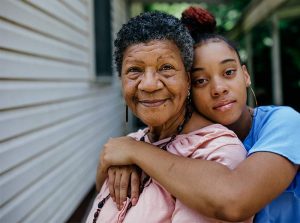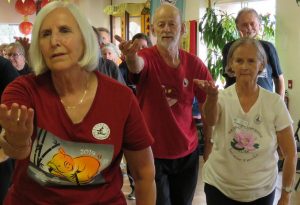Improve the Psychological Well-Being of Patients with Breast Cancer with Mindfulness
By John M. de Castro, Ph.D.
“Mindfulness based interventions hold a great deal of promise for helping people with cancer cope across a broad range of symptoms and issues, both during and after the completion of active treatment.” – Jessica Pieczynski
Receiving a diagnosis of cancer has a huge impact on most people. Feelings of depression, anxiety, and fear are very common and are normal responses to this life-changing and potentially life-ending experience. But cancer diagnosis is not necessarily a death sentence. Over half of the people diagnosed with cancer are still alive 10 years later and this number is rapidly increasing. But, surviving cancer carries with it a number of problems. Anxiety, depression, fatigue and insomnia are common symptoms in the aftermath of surviving breast cancer. These symptoms markedly reduce the quality of life of the patients.
Mindfulness training has been shown to help with cancer recovery and help to alleviate many of the residual physical and psychological symptoms, including stress, sleep disturbance, and anxiety and depression. A therapeutic technique that contains mindfulness training and Cognitive Behavioral Therapy (CBT) is Acceptance and Commitment Therapy (ACT). It focuses on the individual’s thoughts, feelings, and behavior and how they interact to impact their psychological and physical well-being. It then works to change thinking to alter the interaction and produce greater life satisfaction. ACT employs mindfulness practices to increase awareness and develop an attitude of acceptance and compassion in the presence of painful thoughts and feelings. ACT teaches individuals to “just notice”, accept and embrace private experiences and focus on behavioral responses that produce more desirable outcomes. This suggests that ACT may be an effective treatment for women with breast cancer.
In today’s Research News article “Efficacy of acceptance and commitment therapy (ACT) on depression, pain acceptance, and psychological flexibility in married women with breast cancer: a pre- and post-test clinical trial.” (See summary below or view the full text of the study at: https://www.ncbi.nlm.nih.gov/pmc/articles/PMC8317551/ ) Ghorbani and colleagues recruited married women with breast cancer who exhibited moderate levels of anxiety and depression and randomly assigned them to receive 8 weekly 90 minute sessions of Acceptance and Commitment Therapy (ACT) or to a wait list control condition. They were measured before and after ACT and 2 months later for perceived stress, anxiety, depression, chronic pain, and acceptance and action.
They found that in comparison to baseline and the wait-list control group after Acceptance and Commitment Therapy (ACT) there were significant reductions in depression and significant increases in pain acceptance and flexibility. These improvements were maintained at the 2-month follow-up.
The study did not have an active control condition, rather employing a wait-list control. This leaves open the possibility of participant expectancy (placebo) effects or attentional (Hawthorne) effects explaining the results. In addition, Acceptance and Commitment Therapy (ACT) is a complex therapy with several therapeutic components. It is unclear what components or combination of components are critical for the benefits. Nevertheless, the results demonstrate that Acceptance and Commitment Therapy (ACT) is effective in improving the psychological well-being of breast cancer patients. This could well translate into better recovery and health in these women.
So, improve the psychological well-being of patients with breast cancer with mindfulness.
“mindfulness-based stress reduction can be effective in alleviating anxiety and depression, decreasing long-term emotional and physical side effects of treatments and improving the quality of sleep in breast cancer patients.” – BCRF
CMCS – Center for Mindfulness and Contemplative Studies
This and other Contemplative Studies posts are available on Twitter @MindfulResearch
Study Summary
Ghorbani, V., Zanjani, Z., Omidi, A., & Sarvizadeh, M. (2021). Efficacy of acceptance and commitment therapy (ACT) on depression, pain acceptance, and psychological flexibility in married women with breast cancer: a pre- and post-test clinical trial. Trends in psychiatry and psychotherapy, 43(2), 126–133. https://doi.org/10.47626/2237-6089-2020-0022
Abstract
Objective:
Breast cancer is the most common cancer in women worldwide. Many of these patients suffer from multiple psychological symptoms. The present study aimed to investigate the impact of acceptance and commitment therapy (ACT) on depression, pain acceptance, and psychological flexibility in married women with breast cancer.
Methods:
The present study was a pre- and post-test clinical trial with intervention and control groups. The research population consisted of women with breast cancer referred to the Ayatollah Yasrebi and Shahid Beheshti Hospitals in Kashan in 2018. Through a purposive sampling method, 40 women were selected and randomly divided into two groups, namely, intervention (n = 20) and control (n = 20). The applied tools included the Depression, Anxiety and Stress Scale (DASS-21), Chronic Pain Acceptance Questionnaire 8 (CPAQ-8), and Acceptance and Action Questionnaire – II (AAQ-II). Data were analyzed by SPSS 16 using descriptive statistics and analysis of variance (ANOVA).
Results:
The results showed that ACT treatment significantly reduced the mean scores of depression compared to the control group (F = 107.72, p < 0.001). The mean scores of pain acceptance (F = 9.58, p < 0.05) and psychological flexibility (F = 10.61, p < 0 .05) significantly increased in comparison with the control group.
Conclusion:
ACT can be considered as an effective therapeutic approach to reduce depression and increase pain acceptance and psychological flexibility in women with breast cancer. These changes appear to be due to improved acceptance of thoughts and feelings associated with cancer and increased psychological flexibility, which is the primary goal of ACT treatment.
https://www.ncbi.nlm.nih.gov/pmc/articles/PMC8317551/









